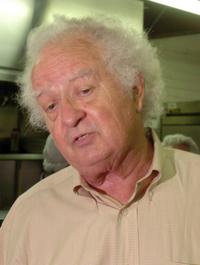I was certainly shocked by your “Red Light Cameras Should Remain” editorial of Oct. 14. It is even more naïve than a similar Sept. 22 article by Star columnist Tim Steller, something I didn’t think could be possible.
Tucson city voters should vote “yes” on Prop. 201 to eliminate red light cameras.
I’m glad that you didn’t say that the cameras reduce accidents or increase safety because there’s not a single independent study that shows that they do. That is a major reason why the cameras have been on the ballot in 31 cities, and been defeated in 30 of them. Last year Sierra Vista voters rejected their cameras by a 77-to-23 percent margin.
Occasionally the camera company will give someone, like the Tucson police chief, a bunch of misleading and incomprehensible numbers that make it appear that the cameras have value. Sadly, the media will often parrot the numbers without even asking where they came from.
Your editorial states that, “The way the system is set up is flawed and must be improved.” And, you recognize that “innocent drivers are snared because of how the state law defines where an ‘intersection’ begins.” FYI, it was this very same camera company that poured in a ton of campaign contributions to persuade the Legislature to change the definition of an intersection.
I was there and voted against it because the new law put us out of compliance with every other state. (I’ve explained this in a YouTube video; search for: kromko red light.) I didn’t realize at the time that it was part of a scam to put drivers in a situation where they could not avoid getting a ticket. For example, if you are the second or third car in line to turn left, and the first car doesn’t go at maximum speed, you simply can’t get through the intersection in time.
You recognize that “One solution would be to paint these intersections so drivers clearly understand what’s legal and not.”
And that “Another would be to lengthen a yellow light cycle to give drivers more time to clear the intersection.”
And then you mentioned that the fines are too high at $335 (you forgot to mention it’s $450 with the traffic school fee).
So you clearly recognize what needs to be done, but you failed to take the next step and ask why haven’t any of these changes been made — after years of people asking for them?
The volunteers who gathered 55,000 signatures to put the cameras on the ballot as Prop. 201 have repeatedly asked the Tucson City Council to make the improvements that you mentioned in your editorial. What a Star editorial should have asked, but never has, is “Why haven’t any of the things you suggested already been done?”
That is why we were finally forced to do a petition drive to shut down the whole system. We realized that there couldn’t possibly be any changes such as those you naïvely requested.
The problem is that what you, and we, see as making the system more fair reduces revenue. Painting the intersection to make it clear for drivers would reduce the number of tickets, and hence, the revenue. Driver confusion was part of the original scam.
Likewise, yellow light timing is a major part of the scam. Adding one second to the yellow light time would eliminate 80 percent of the tickets. Does the camera company, the police, the courts, and the city council want to eliminate 80 percent of their camera revenue? This is why there will never be any of the improvements that you suggested.
I hope that people ponder the previous paragraph. Almost all the tickets are for reaching a line that drivers can’t see, less than one second late. Drivers receive tickets for reaching the line three- hundredths of a second late. This is absolutely not a threat to safety and it’s a violation that an officer on the scene would not be able to detect.
I also hope that the Daily Star will change its editorial position.




